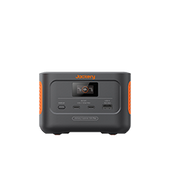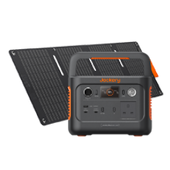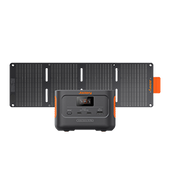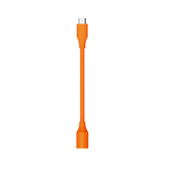Do you need a licence to ride an electric bike in the UK? E-bikes, or electric bikes, are a green, affordable, and convenient way to get around, but it's essential to know the rules of the road. You don't need a driver's license to ride most e-bikes in the UK as long as they meet Electrically Assisted Pedal Cycle (EAPC) requirements.
This blog answers the most important question: do you need a licence to ride an electric bike? It also goes into UK laws, speed limitations, power output rules, and more. Learn the rules concerning e-bike licenses today so you can stay safe and legal when you ride to work or for fun.
|
Key Takeaways: |
|
● Anyone who wishes to ride an electric bike in the UK should be aware of the regulations governing these vehicles so they can avoid legal issues and ride safely at all times. ● You do not need a licence to ride an e-bike on UK roads if it meets EAPC requirements (i.e., it is an electrically assisted pedal cycle). ● If a bike does not comply with these electric bike standards (if the powerful motor exceeds 250 watts or if it gives assistance at speeds greater than 25 km/h), it has the same legal status as a road vehicle. ● Everyone can benefit from a little extra assistance, but if you live at the bottom of a steep slope, you'll discover that an e-bike keeps the journey from becoming too complicated before you've even begun. ● We highly recommend the Jackery Explorer 3000 v2 and the Explorer 2000 v2 as portable power supplies for charging your E-bike outdoors, offering higher capacity and portability. |
Understanding Electric Bikes in the UK
Anyone who wishes to ride an electric bike in the UK should be aware of the regulations governing these vehicles so they can avoid legal issues and ride safely at all times. This includes determining whether you need a licence for your e-bike and what the maximum output power is that you can achieve. Continue reading to find out whether electric bikes are legal in the UK and if you need an e-bike licence.
What is an Electric Bike?
An electric bicycle features an electric motor to assist you in riding. This engine runs on a rechargeable battery. To be considered an e-bike, the motor's function must be to help rather than drive the bike. As a result, you must pedal in order for this aid to work.
The motor's power output is regulated based on your cycling intensity and assistance level. Electric bikes have multiple settings that allow riders to strike a balance between the extent of pedal-assistance, the bike's range, and the total battery life.

Are Electric Bikes Legal In The UK?
Yes, electric bicycles are. However, there are still restrictions on modifications, and only the bikes listed above are legal to ride without registration. It's worth noting that new bikes with a "twist and go" throttle function can only reach a speed of 3.7 mph (6 km/h). They do not qualify as an EAPC because there are no pedals. Any electric vehicle that falls outside of this category must be registered, taxed, and licensed.
Who Can Ride An E-Bike In The UK?
To comply with UK regulations, an electric bike must have a motor that aids while peddling and a power output of no more than 250 watts. At speeds greater than 15.5 mph (25 km/h), the motor's assistance must automatically cease. Furthermore, the legal age for riding such a bike is 14 years or older. Meeting these standards allows you to ride your electric bicycle without a license.
Are There Different Electric Bike Rules In Northern Ireland?
According to Northern Ireland's electric bike laws, an electrically assisted pedal cycle is classified in the same way as in Wales, Scotland, and England. That means that in order to qualify as an Electrically Assisted Pedal Cycle and comply with EAPC guidelines, the cycle must have a maximum power output of 250 watts and cannot utilise the electric motor to push itself faster than 25 km/h (15.1 mph).
While there were previously separate laws, as of May 2020, owners of electric bikes in Northern Ireland no longer need a driver's license, registration, or insurance to ride on cycle lanes, public roads, and other areas where pedal bikes are permitted.
Additional Details on UK E-Bike Laws
The restrictions are applicable in England, Northern Ireland, Wales, and Scotland, with precise information as follows:
|
Rules & Regulations for E-bike in the UK |
|
|
General Cycling Rules |
The standard cycling restrictions apply, including the requirement for a white front light, a red rear light, and amber pedal reflectors. |
|
Tricycles and Tandems |
Both types of bicycles are acceptable under the same rules as long as they meet the EAPC requirements. |
|
Legal Speed Limit |
While standard road speed limits do not apply to bicycles, electric bikes must turn off their electrical assistance at 15.5 mph. Beyond this pace, you can pedal as fast as you like but without engine aid. |
|
Legality on Roads |
Electric bikes that meet EAPC requirements are totally lawful on UK roads, exactly like traditional pedal bicycles. |
|
Starting Assistance Feature |
Some e-bikes have a starting assistance function that works without peddling. This feature is permitted as long as it only assists up to 6 km/h (3.7 miles per hour). |
|
Modifying E-bikes With Kits |
Kits available for purchase, such as those on Amazon that boost an e-bike's speed, make the bike illegal to ride on public roads. Additionally, using such kits may void the bike's warranties. These changes are not advisable. |
|
Riding with a Driving Ban |
A popular question among riders is if they can ride an electric bike while prohibited from driving. When you are not allowed to drive, you can still ride an electric bike as long as it meets EAPC requirements, as they are classified as bicycles rather than motorbikes. |
Do You Need a Licence for an Electric Bike?
You do not need a licence to ride an e-bike on UK roads if it meets EAPC requirements (i.e., it is an electrically assisted pedal cycle). If you have an electric bike with a 'twist and go' throttle (which can be driven without peddling), it does not meet EAPC regulations and is classified as a motor vehicle under the Road Traffic Act. This means that it must be registered with the DVLA, which includes vehicle tax and insurance unless it has been 'type approved' by the government.

What Does the 'Maximum 250W Assistance' Mean?
Surprisingly, the 250 watts of help do not refer to the battery or motor itself but to the maximum power output of electrical assistance that activates when you pedal. Following EAPC requirements, the assistance will stop when the speed hits 15.5mph or 25kmph.
What Does the 'Twist And Go' Mean?
Twisting the throttle, usually located on the handlebars, controls an electric bike with a twist-and-go mechanism, which does not require the pedals to revolve to engage the engine. Some twist-and-go e-bikes for the elderly or disabled are covered by GB e-bike rules as long as they adhere to speed limits and maximum power motor assistance and have been type-approved by the government.
What Bike Can I Ride With A Full Car Licence?
If you obtained your licence before February 1, 2001, you can ride a scooter or moped of up to 50cc/4kW without L plates. If you desire anything with more power, you must take your CBT. The Super Soco TC can be purchased with a speed restriction of 28mph, with the remainder of the power de-restricted after CBT documentation is presented.
Anyone who obtained their licence after February 1, 2001, will be required to complete Compulsory Basic Training (CBT). The CBT typically costs around £100 and is available from a variety of local vendors. It expands the options for a variety of vehicles, including electric motorcycles, scooters, and our speed pedelecs. We strongly recommend doing the CBT to improve your riding safety and confidence.
When Does Cycle Insurance Work?
Cycle insurance for an electric bike applies when it is classified as an electrically assisted pedal cycle and meets all of the EAPC power and speed standards specified above. E-bikes that do not follow these regulations will be ineligible for coverage under cycle insurance policies.
Requirements for an EAPC
Most electric bikes do not require a licence of any type. Only if the bike has a motor rated at more than 250W or an assisted speed of more than 15.5mph will you require a licence. Fortunately, the legislation is clearer regarding electric bicycles with electric motors. These are most generally known as EAPCs or Electrically Assisted Pedal Cycles. Riding an EAPC does not require a licence, nor does it require registration, taxation, or insurance.
The primary limits on what qualifies an e-bike or EAPC are:
● Must have pedals for propulsion.
● Can have more than two wheels, such as a tricycle.
● Can travel up to 15.5 mph without peddling, but only if allowed.
● Its Electric Motor must have a 'continuous rated power' output of no more than 250 watts.
● Its Electric Motor must not be able to propel the bike while it is going at more than 15.5 kilometres per hour (mph).
● Markings on the bike must display both: the bike manufacturer and its rated constant power output.
● Markings on the bike must also display one of the following: the battery voltage or the maximum speed at which the motor can propel the bike.
Where Can You Ride An EAPC?
If your bike is an EAPC, you can ride it on cycle routes and wherever pedal bikes are permitted. It is not legal to bike on pavements. Electric bikes can be ridden on any public roadway or trail that would normally allow a pedal bike. Obviously, take the usual precautions on any multi-use paths, and always wear a helmet and other safety equipment.
What if My Electric Bike Doesn't Meet the Regulations?
If a bike does not comply with these electric bike standards (if the powerful motor exceeds 250 watts or if it gives assistance at speeds greater than 25 km/h), it has the same legal status as a road vehicle.
It will be classified as a motor vehicle and must be properly registered and taxed, much like electric motorcycles and mopeds. Such bikes are also known as speed pedelecs. If your bike meets these requirements, you won't be able to ride it on UK cycle lanes without a driver's licence, a crash helmet, and DVLA certification.
Does This Make Any e-bike That Doesn't Comply With The Restrictions Illegal?
It is not prohibited to own an e-bike with a power output greater than 250 Watts or when the electrical assistance does not stop at 25 kph. However, riding it as a conventional bike (without registration and insurance, as with a moped) on a public roadway is prohibited, including both roads and off-road rights-of-way, such as bridleways and byways.
Unregistered and uninsured e-bikes that do not comply with the requirements may only be ridden on private property where the public does not have access, with the landowner's permission.
How Easy Is It To Determine Whether An E-Bike Violates The Regulations Or Not?
In reality, most new e-bikes in the UK are designed for the European market and therefore meet European standards. Look for the CE conformity label to ensure the device has undergone the necessary tests.
A bike's shape and size do not reveal all of its specs, but Construction and Use standards specify the required safety criteria for bikes. The most important of these for electric bikes is that they have a label or plate with the manufacturer's name on it, and the power output must default to off so that there is no power assistance without pedalling.
Is There a Distinct Law Governing 'Twist-And-Go' Electric Bikes?
Not all e-bikes require pedal motion to activate the motor. Some manufacturers make bikes with a throttle that can be twisted to start without the need for peddling, giving them the name 'twist-and-go'.
EU regulation currently classifies new devices under the L1e-A 'powered cycles' category, allowing power up to 1,000 Watts. This implies they are not classified and controlled as conventional cycles. However, the specific requirements for registering them in the UK are unknown. The legal situation is further exacerbated by the fact that pre-existing 'twist-and-go' e-bikes with a 250-watt engine are still lawful and can be purchased used.

Comparing E-bikes With Motor Vehicles
With a sustained emphasis on environmentally friendly practices, e-bikes can serve as a viable alternative to other motor vehicles such as cars, motorcycles, and motorbikes. There are several advantages to owning and riding an e-bike over other modes of transportation, as detailed below.
Ecological Travel
One of the common themes is that e-bikes are far more environmentally friendly than other types of vehicles. E-bikes are ideal for short commutes and have a low carbon footprint, but cars use fuel, and even electric cars have a significant negative impact on the environment.
Cost-Effective Transportation
E-bikes, like hybrid or electric automobiles, may appear expensive at first, but with low maintenance costs, they are a great investment. Even when fuel prices are low, the cost of owning an e-bike results in larger levels of savings over time than operating a standard fuel-powered automobile.
Improved Mobility
One of the primary selling points may be that e-bikes offer greater mobility, enabling you to move more efficiently and easily. This makes them excellent for commuting or for individuals who would find riding too demanding.
Is E-Biking Safer Than Motor Vehicles?
There is insufficient statistical information to say, as the Department for Transport (DfT) accident figures include all cycles, not just e-bikes. However, the dangers to all types of riders, including themselves and other road users, are low. According to police reports given to the DfT that do not assign fault, on average each year, on British roads:
● 98% of pedestrian injuries result from motor vehicle crashes.
● Cycle crashes cause 2% of pedestrian injuries.
● Collisions with motor vehicles account for 99.3% of pedestrian deaths, resulting in 425 deaths every year. This figure is 150 times higher than the number of deaths caused by cycle accidents.
● Only 0.7% of pedestrian deaths include a collision with a cyclist, which amounts to less than three per year.
● Collisions with motor vehicles account for 97.7% of serious pedestrian injuries (5,352 each year).
● Cycle crashes cause 2.3% of major pedestrian injuries (124 people annually).
Given that motor vehicles travel more kilometres per year than bicycles: Cycles are less likely than other vehicles to cause pedestrian deaths in crashes on highly populated urban routes. Heavy vehicles, such as HGVs, buses, and coaches, provide the statistically most significant threat.
Are E-Bike Riders Required To Pay Vehicle Excise Duty?
While e-bikes are not subject to VED (often incorrectly referred to as 'road tax'), most people do pay for the roads they use in some form or another. Either from income or council tax or through vehicle excise duty (more than eight out of ten bikers also drive).
Even if the legislation required you to pay VED on cycles, you would not be taxed because the amount paid is based on fuel type and CO2 emissions, both of which do not apply to bikes. It's not as if non-driving cyclists greatly profit from taxed motorists; the majority of road transport funds are spent on highways, which cyclists cannot access while riding their bikes.
Who Will Profit the Most From Utilising An E-Bike?
Everyone can benefit from a little extra assistance, but if you live at the bottom of a steep slope, you'll discover that an e-bike keeps the journey from becoming too difficult before you've even begun. Older adults with mobility challenges, as well as those suffering from recurring illnesses or injuries, may find that this method of transportation enables them to continue their riding habits that they would otherwise have to
abandon.
The drawback is that you might have to speak to your parents at the café stop rather than speeding by on your way home while they are still on the out leg. On multigenerational rides, it can also help level things out because they won't be so far behind you as you push forward on your ultra-light road bike.
A UK study indicated that e-bikes helped individuals over 50 manage physical conditions that made everyday cycling difficult. They also felt safer using e-bikes compared to traditional pedal cycles. Trial participants stated that e-bikes gave them the ability to discover new routes in their local region and helped them ride with more physically fit people.
Individuals with a recurrent injury or illness may benefit from e-bikes, which reduce the intensity of cycling while still offering effective aerobic training.
Are E-Bikes Safe for Users?
One study in the Netherlands, where e-bikes are popular, indicated that e-bike users were no more likely than traditional pedal cycle users to be involved in a mishap that required admission to an emergency department based on the distance travelled.
Jackery Portable Power Station with CTB Technology
Jackery Portable Power Stations are excellent tools for charging e-bikes, especially when you're off-grid or need a convenient power source away from a wall outlet. E-bike chargers typically plug into standard AC (alternating current) wall outlets. Jackery Portable Power Stations come equipped with AC outlets, allowing you to simply plug your E-bike charger directly into the power station, just as you would into a wall socket at home.

Jackery Portable Power Stations contain large lithium-ion batteries that store electrical energy. This means you can charge the Jackery beforehand (from a wall outlet, car charger, or solar panels) and then use that stored energy to charge your e-bike anywhere.
Jackery Portable Power Stations are designed to be paired with Jackery SolarSaga solar panels. This creates a "Solar Generator" system. With this setup, you can harness solar energy to recharge your Jackery power station and then use that clean energy to charge your e-bike.
Jackery Explorer 3000 v2
E-bike batteries typically range from 300Wh to 700Wh, with some long-range models exceeding 750Wh. With a 3072Wh capacity, the Jackery Explorer 3000 v2 can fully charge most e-bike batteries multiple times over. For example, Jackery itself states that the Explorer 3000 v2 can charge a 625Wh e-bike battery 3-4 times. This means you can power your e-bike for several rides without needing to recharge the Jackery itself.

E-bike chargers typically draw between 36W and over 100W, depending on their design and the battery size. The Explorer 3000 v2's 3600W pure sine wave inverter output (and a 7200W surge capability) is far more than enough to handle any standard e-bike charger. This ensures efficient and stable charging for your e-bike.
The Jackery Explorer 3000 v2 usually comes with multiple AC outlets, allowing you to plug in your e-bike charger directly, just like you would at home. The Explorer 3000 v2 can be fully recharged from a wall outlet (AC+DC charging) in approximately 1.4 hours. This makes it convenient for topping up at home before a trip.
It supports a maximum solar input of 1000W, which can fully recharge the power station in about 3.5 hours with optimal sunlight and sufficient Jackery SolarSaga panels (e.g., 4 x SolarSaga 200W panels).
The Jackery Explorer 3000 v2 utilises LiFePO4 (Lithium Iron Phosphate) battery chemistry, renowned for its durability, safety, and extended cycle life. It boasts up to 4,000 charge cycles to 70%+ capacity, meaning it can last for many years of regular use.
Jackery Explorer 2000 v2
The Jackery Explorer 2000 v2 is another excellent choice for charging e-bikes, offering a compelling balance of capacity, power, and portability. While the 3000 v2 offers even more, the 2000 v2 is often a "sweet spot" for many e-bike users.

Similar to the 3000 v2, the Explorer 2000 v2 boasts a substantial 2042Wh capacity. This is more than enough to charge most e-bike batteries multiple times to full capacity. For a common e-bike battery of around 500Wh, you could expect to get 3-4 full charges from a single Jackery Explorer 2000 v2. Jackery itself states it can charge a 625Wh e-bike battery 2.3 times.
F-Bike chargers draw power ranging from 36W to over 100W. The Explorer 2000 v2's 2200W continuous AC output (and 4400W surge) is significantly more than what any e-bike charger requires. This ensures your e-bike charges efficiently and without any power limitations, even if you're also running other small electronics simultaneously.
One of the key advantages of the 2000 v2 over the 3000 v2 is its lighter weight and more compact design. Weighing around 17.5 kg (38.6 lbs), it's noticeably lighter than the 3000 v2's 27 kg (59.5 lbs). This makes the 2000 v2 much easier to transport, whether you're loading it into a car, RV, or even a specialised cargo bike trailer. For those who prioritise portability while still needing significant power, the 2000 v2 is a strong contender.
The Explorer 2000 v2 can recharge from a wall outlet in a quick 1.7 hours. This is incredibly convenient for quick turnarounds between trips. It supports up to 400W solar input, allowing it to be fully recharged with SolarSaga panels in as little as 6 hours (with optimal sunlight and enough panels). This makes it ideal for off-grid e-bike touring or extended camping where grid power is unavailable.
FAQs
The following are frequently asked questions about the licence for an electric bike.
1. Can we ride an electric bike without a license?
Most electric bikes do not require a licence of any type. Only if the bike has a motor rated at more than 250W or an assisted speed of more than 15.5mph will you require a licence. Fortunately, the legislation is clearer regarding electric bicycles with electric motors.
2. Do police stop electric bikes?
Sergeant Stu Ford, cycle team lead at the City of London Police, said: "Since the formation of the cycling team last summer, nearly 400 illegal e-bikes and e-scooters have been seized, which is more than any other police force in the country."
3. Are e-bikes legal on UK roads?
Yes, electronic bikes (e-bikes) are usually permitted on UK roads as long as they meet certain conditions that make them "electrically assisted pedal cycles" (EAPC). To ride an EAPC, you must be at least 14 years old. You don't need a licence, registration, or insurance.
4. What happens if you get caught on an electric bike?
Riders of these vehicles in the City, if found, can expect to have their cars impounded and, depending on the infraction, face a fine of £300. According to the City of London Police, unauthorised e-bikes are commonly utilised to conduct crimes such as phone theft.
Final Thoughts
So, do you have to get a license to ride an electric bike? If your e-bike meets EAPC rules, the answer is no in most parts of the UK. You can ride on public roads without a licence as long as your bike has a power limit of 250 watts and a speed limit of 15.5 mph.
However, if a bike exceeds these limitations, it is classified as a motor vehicle and must be registered, insured, and have a licence. Knowing these differences will help you bike safely and legally. Electric bikes are a cleaner and cheaper option than vehicles and motorbikes. If you know how to ride one, you may enjoy every ride without worry.






























































